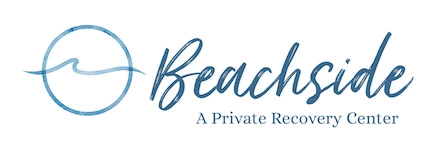Much of what is known about alcoholism has a male-as-norm bias, which leads to the incorrect assumption that alcoholism in women is essentially the same as alcoholism in men.
In actuality, women have unique physiological, psychological, and social characteristics that make an alcohol use disorder (AUD) significantly different for them than it is for men. It’s important to be aware of these differences so that women can receive the treatment that is most likely to lead to their recovery.
A Longstanding Bias
Male-as-norm bias for alcoholism is a longstanding issue. Dr. Dina Wilke reported on this bias nearly three decades ago, writing in a February 1994 article for Health & Social Work that alcoholism research has primarily focused on men, making male alcoholic behavior the standard by which women are judged.
“Not including women research on treatment and recovery and not reporting on gender differences reinforce the assumption that women’s treatment and recovery is no different than men’s,” Wilke observed.
In subsequent analysis of research, diagnoses, and treatment for alcoholism, others also have noted a gender bias in alcoholism. What Wilke wrote in 1994 still applies today: This bias that treats alcoholism as a “man’s disease” is not only ineffective but possibly harmful. Research on alcoholism from a women’s health perspective is key to developing accurate assessments and successful interventions that are appropriate for women.
Women’s Unique Circumstances
The causes of alcoholism in women can be quite different from what causes alcoholism in men. It is much more common among women, for instance, to face stressors in juggling family and career that could potentially lead to excessive drinking. Other unique circumstances for women include financial anxiety from pay inequities; postpartum or postmenopausal depression; emotional or physical abuse from their partner; or being more isolated at home.
There are also physiological differences in women that make them more susceptible to alcohol-related problems. The National Institute on Alcohol Abuse and Alcoholism points out that women weigh less than men, and they also have less water per pound in their bodies, meaning they are likely to experience the effects of alcohol sooner and at lesser amounts than men.
Alcohol abuse also puts women at greater risk of long-term illnesses, such as liver damage, brain damage, and heart disease. Additionally, women may have to contend with health conditions that are unique to their gender, such as a higher risk of developing breast cancer or potential damage to themselves and their unborn child if they drink during pregnancy.
Barriers to Treatment
According to a July 2020 article in Alcohol Research, women with AUD have more barriers to treatment than men with the disorder; as a result, they are less likely to seek help. Often women feel shame or a stigma in admitting alcohol abuse. Such feelings may be more intense for women who have children, many of whom may worry they’ll be judged as an unfit mother. They also could be concerned that admitting to an alcohol problem would put them in danger of losing custody of their children.
Economic issues present further barriers to women obtaining treatment for alcoholism. They may have a low-paying job, health insurance that doesn’t cover treatment, or no insurance at all. Those who are mothers may be unable to afford childcare, or they may be unable to participate in an inpatient treatment program of 30 days or more.
Effective Treatment Options
Fortunately, there are options that overcome the barriers to treatment for women. Individualized treatment programs focus on meeting the unique needs and circumstances of each patient. These programs help women understand the causes of their addiction, which can serve to dissipate the shame and stigma they feel in admitting their addiction.
Attending group therapy sessions with other women also can be an important aspect of treatment. Women are likely to find empathy when they interact with other women who are struggling with the same types of stressors that they have experienced.
In addition, women have an increasing number of treatment options to meet their childcare needs. As an alternative to an inpatient program, they may opt to participate in an outpatient program that meets once or twice a week. Technology also has improved women’s access to treatments, with some programs offering online therapy options that allow women to participate from their homes.
Treatment providers can alleviate women’s concerns about affordability, whether by working with their insurance company or directly with uninsured patients to create a manageable payment plan.
Eliminating male-as-norm bias in alcohol treatment means treating women as the individuals they are, understanding their concerns, and helping them overcome obstacles to get the care they need.
Beachside Rehab helps women overcome their alcoholism with inpatient and outpatient treatment programs that are individualized to their needs. Contact our trained admissions counselors at 866-349-1770 to discuss our dual diagnosis treatment.
Sources:
- Women And Alcoholism: How a Male-as-Norm Bias Affects Research, Assessment, and Treatment: https://academic.oup.com/hsw/article-abstract/19/1/29/627666
- Gender Bias in Addictions and their Treatment: An Overview from the Social Perspective: https://www.researchgate.net/publication/275543780_Gender_Bias_in_Addictions_and_their_Treatment_An_Overview_from_the_Social_Perspective
- National Institute on Alcohol Abuse and Alcoholism – Women and Alcohol: https://www.niaaa.nih.gov/publications/brochures-and-fact-sheets/women-and-alcohol
- National Library of Medicine, Alcohol Research: Treatment Interventions for Women With Alcohol Use Disorder: https://www.ncbi.nlm.nih.gov/pmc/articles/PMC7384374/

